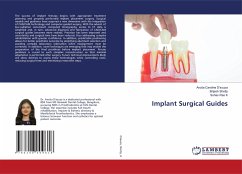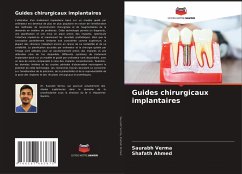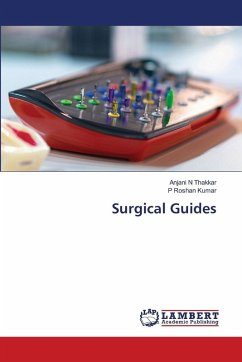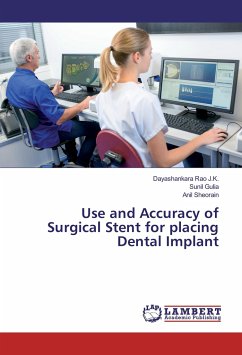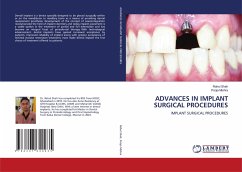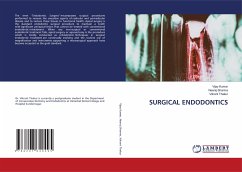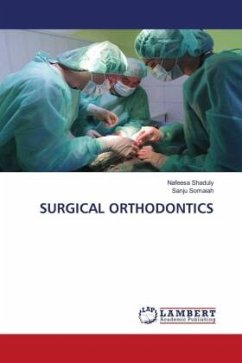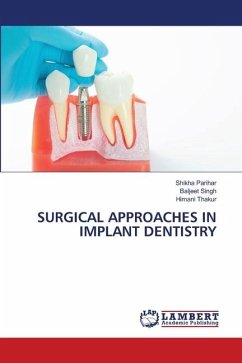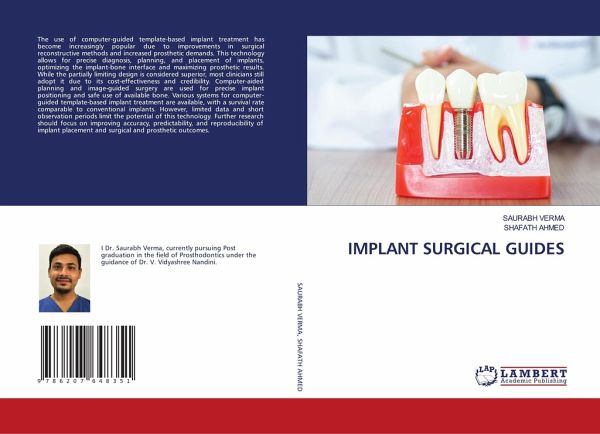
IMPLANT SURGICAL GUIDES
Versandkostenfrei!
Versandfertig in 6-10 Tagen
40,99 €
inkl. MwSt.

PAYBACK Punkte
20 °P sammeln!
The use of computer-guided template-based implant treatment has become increasingly popular due to improvements in surgical reconstructive methods and increased prosthetic demands. This technology allows for precise diagnosis, planning, and placement of implants, optimizing the implant-bone interface and maximizing prosthetic results. While the partially limiting design is considered superior, most clinicians still adopt it due to its cost-effectiveness and credibility. Computer-aided planning and image-guided surgery are used for precise implant positioning and safe use of available bone. Var...
The use of computer-guided template-based implant treatment has become increasingly popular due to improvements in surgical reconstructive methods and increased prosthetic demands. This technology allows for precise diagnosis, planning, and placement of implants, optimizing the implant-bone interface and maximizing prosthetic results. While the partially limiting design is considered superior, most clinicians still adopt it due to its cost-effectiveness and credibility. Computer-aided planning and image-guided surgery are used for precise implant positioning and safe use of available bone. Various systems for computer-guided template-based implant treatment are available, with a survival rate comparable to conventional implants. However, limited data and short observation periods limit the potential of this technology. Further research should focus on improving accuracy, predictability, and reproducibility of implant placement and surgical and prosthetic outcomes.



